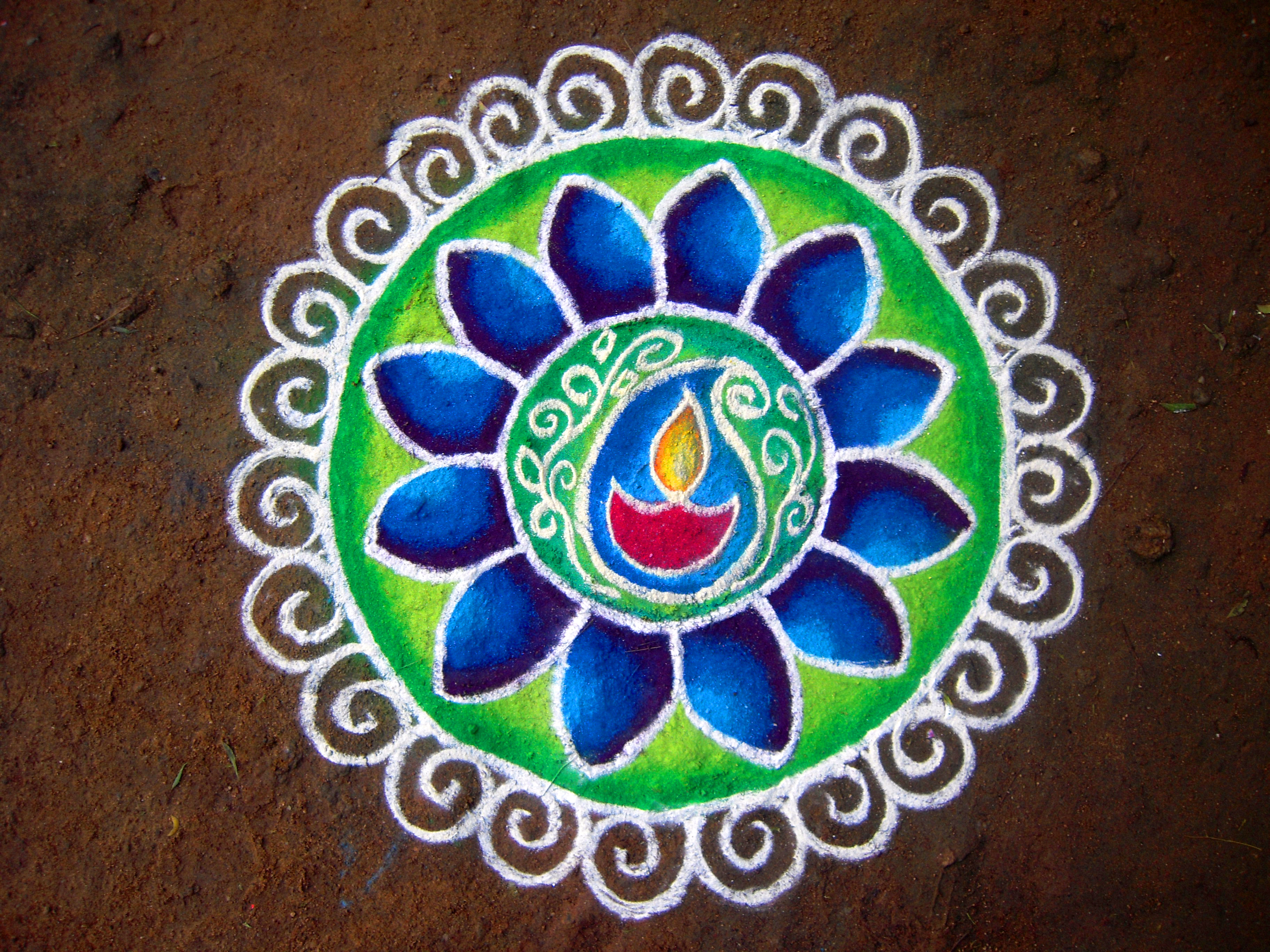|
Chak-pur
''Chak-pur'' are the traditional tools used in Tibetan sandpainting to produce sand mandala Sand mandala (; ) is a Tibetan Buddhist tradition involving the creation and destruction of mandalas made from colored sand. Once complete, the sand mandala's ritualistic dismantling is accompanied by ceremonies and viewing to symbolize Budd ...s. They are conically shaped metal funnels and often have ridges down the sides. Normally about in length, they taper to a fine point and are made with varying diameter holes at the end in order to disperse the sand in a controlled way. A Tibetan monk will usually tap glide a piece of wood over the ridges in order to slowly allow the sand to emerge through the hole through the vibrations created. References Artistic techniques Sand paintings Tibetan art {{tibet-stub ... [...More Info...] [...Related Items...] OR: [Wikipedia] [Google] [Baidu] |
Sandpainting
Sandpainting is the art of pouring coloured sands, and powdered pigments from minerals or crystals, or pigments from other natural or synthetic sources onto a surface to make a fixed or unfixed sand painting. Unfixed sand paintings have a long established cultural history in numerous social groupings around the globe, and are often temporary, ritual paintings prepared for religious or healing ceremonies. This form of art is also referred to as drypainting. Drypainting is practised by Native Americans in the Southwestern United States, by Tibetan and Buddhist monks, as well as Indigenous Australians, and also by Latin Americans on certain Christian holy days. History Native American sandpainting In the sandpainting of southwestern Native Americans (the most famous of which are the Navajo nown as the Diné, the Medicine Man (or ''Hatałii'') paints loosely upon the ground of a hogan, where the ceremony takes place, or on a buckskin or cloth tarpaulin, by letting the colou ... [...More Info...] [...Related Items...] OR: [Wikipedia] [Google] [Baidu] |
Sand Mandala
Sand mandala (; ) is a Tibetan Buddhist tradition involving the creation and destruction of mandalas made from colored sand. Once complete, the sand mandala's ritualistic dismantling is accompanied by ceremonies and viewing to symbolize Buddhist doctrinal belief in the transitory nature of material life. Materials and construction Historically, the mandala was not created with naturally dyed sand, but granules of crushed colored stone. In modern times, plain white stones are ground down and dyed with opaque inks to achieve the same effect. The monks use a special, extremely dense sand in order to limit interference by things such as wind or sneezes. Before laying down the sand, the monks assigned to the project will draw the geometric measurements associated with the mandala. The sand granules are then applied using small tubes, funnels, and scrapers, called chak-pur, until the desired pattern is achieved. Sand mandalas traditionally take several weeks to build due to ... [...More Info...] [...Related Items...] OR: [Wikipedia] [Google] [Baidu] |
Tibetan People
The Tibetan people (; ) are an East Asian ethnic group native to Tibet. Their current population is estimated to be around 6.7 million. In addition to the majority living in Tibet Autonomous Region of China, significant numbers of Tibetans live in the Chinese provinces of Gansu, Qinghai, Sichuan, and Yunnan, as well as in India, Nepal, and Bhutan. Tibetan languages belong to the Tibeto-Burman language group. The traditional or mythological explanation of the Tibetan people's origin is that they are the descendants of the human Pha Trelgen Changchup Sempa and rock ogress Ma Drag Sinmo. It is thought that most of the Tibeto-Burman speakers in Southwest China, including Tibetans, are direct descendants from the ancient Qiang people. Most Tibetans practice Tibetan Buddhism, although some observe the indigenous Bon religion and there is a small Muslim minority. Tibetan Buddhism influences Tibetan art, drama and architecture, while the harsh geography of Tibet has produced ... [...More Info...] [...Related Items...] OR: [Wikipedia] [Google] [Baidu] |
Artistic Techniques
Art is a diverse range of human activity, and resulting product, that involves creative or imaginative talent expressive of technical proficiency, beauty, emotional power, or conceptual ideas. There is no generally agreed definition of what constitutes art, and its interpretation has varied greatly throughout history and across cultures. In the Western tradition, the three classical branches of visual art are painting, sculpture, and architecture. Theatre, dance, and other performing arts, as well as literature, music, film and other media such as interactive media, are included in a broader definition of the arts. Until the 17th century, ''art'' referred to any skill or mastery and was not differentiated from crafts or sciences. In modern usage after the 17th century, where aesthetic considerations are paramount, the fine arts are separated and distinguished from acquired skills in general, such as the decorative or applied arts. The nature of art and related concepts, suc ... [...More Info...] [...Related Items...] OR: [Wikipedia] [Google] [Baidu] |
Sand Paintings
Sand is a granular material composed of finely divided mineral particles. Sand has various compositions but is defined by its grain size. Sand grains are smaller than gravel and coarser than silt. Sand can also refer to a textural class of soil or soil type; i.e., a soil containing more than 85 percent sand-sized particles by mass. The composition of sand varies, depending on the local rock sources and conditions, but the most common constituent of sand in inland continental settings and non-tropical coastal settings is silica (silicon dioxide, or SiO2), usually in the form of quartz. Calcium carbonate is the second most common type of sand, for example, aragonite, which has mostly been created, over the past 500million years, by various forms of life, like coral and shellfish. For example, it is the primary form of sand apparent in areas where reefs have dominated the ecosystem for millions of years like the Caribbean. Somewhat more rarely, sand may be composed of calc ... [...More Info...] [...Related Items...] OR: [Wikipedia] [Google] [Baidu] |




